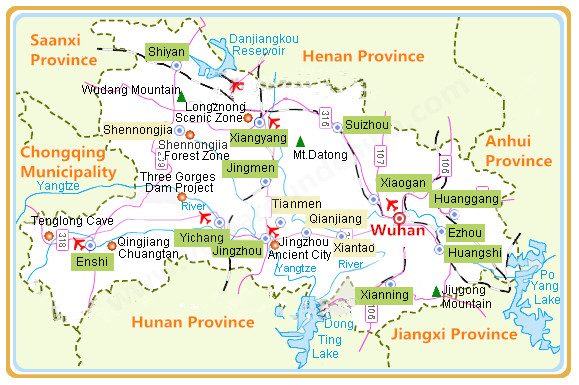 Hubei Province,located in the middle reaches of the Yangtze River and to the north of Dongting Lake in south central of China, is surrounded by Henan Province to the north, Jiangxi and Hunan Province to the south, Anhui Province to the east, Sichuan and Chongqing to the west, Shaanxi Province to the northwest. Hubei has been said to be one of the originating places of the Chinese people. Its capital, Wuhan, is located in the southeastern part of the province.
Hubei Province,located in the middle reaches of the Yangtze River and to the north of Dongting Lake in south central of China, is surrounded by Henan Province to the north, Jiangxi and Hunan Province to the south, Anhui Province to the east, Sichuan and Chongqing to the west, Shaanxi Province to the northwest. Hubei has been said to be one of the originating places of the Chinese people. Its capital, Wuhan, is located in the southeastern part of the province.
Facts of Hubei
Chinese Name: 湖北 (hú bêi)
Abbreviation: 鄂 (è)
Administration Type: Province
Capital: Wuhan City
Location: northern Dongting lake in south central China
Area: 69,500 km²
Population (2015): 61.28 million
Nationalities: Han,Tujia,Miao,Dong,Hui
Tourism Cities in Hubei
| Enshi | Jingzhou | Wuhan | Yichang | Huangshi |
| Xiangyang | Jingmen | Suizhou | Ezhou | Huanggang |
| Shiyan | Xianning | Xiaogan | Shennongjia |
Hubei History & Culture
Hubei, known as Chu in ancient times, was the seat of power of the Zhou Dynasty. During 475 to 221 BC, Chu was involved in many battles with the neighboring state of Qin, now Shaanxi Province. Chu gradually lost most of its territories to the Qin. The Qin were then deafeated by the Han, who established their capital in erstwhile Jingzhou, now the area occupied by Hubei and Hunan. Through the years, Hubei was occupied by successive dynasties. Hubei was renamed the Province to Jinghubei in 982, Song Dynasty(907-1227). In 1339, the Mongols overran Hubei and united it with Hunan, Guangdong and Guangxi and called it Huguang. In 1644, the Manchu Qing dynasty split Huguang into Hubei and Hunan. In 1911, after the Wuchuang Revolution, the People's Republic of China was established. In 1927, Wuhan was the seat of power of the Kuomintang....More Read: Hubei History
What to see in Hubei?
The long history and the brilliant Chu culture endow the region with numerous cultural relics. Ancient towers, grottoes, city remains, imperial mausoleums, temples and nobilities' native places can be found throughout the province. Here lists top attractions in Hubei.More read: Hubei Attractions
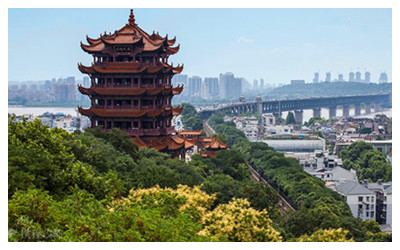 |
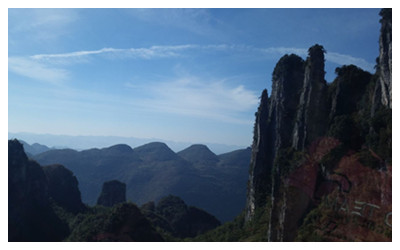 |
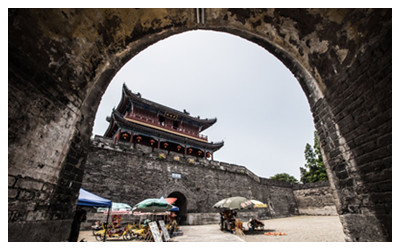 |
| Yellow Crane Tower | Enshi grand Canyon | Jingzhou Ancient City |
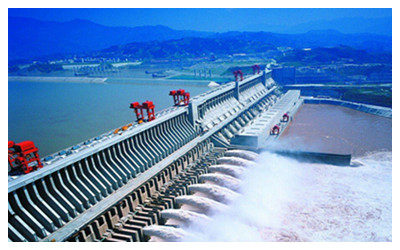 |
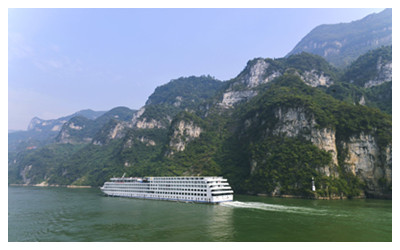 |
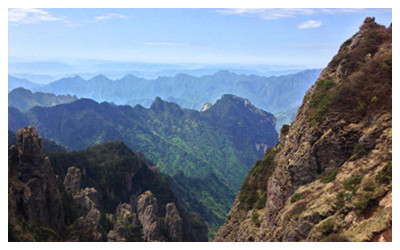 |
| Three Gorges Dam | Xiling Gorge | Shennongjia Scenic Area |
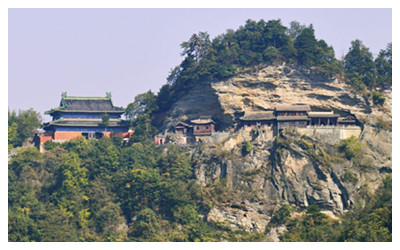 |
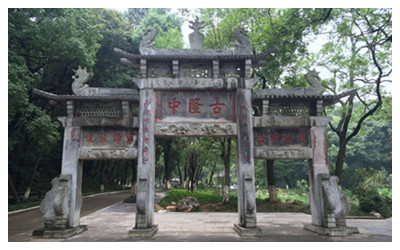 |
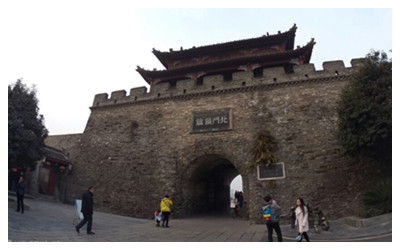 |
| Wudang Mountain | Longzhong Scenic Area | Xiangyang Ancient City |
When to visit Hubei ?
Hubei province has a subtropical monsoonal climate with a humid and hot summer, dry winter and strong sunlight in autumn. Annual rainfall averages 800-1600 millimeters and with average temperatures ranging from 15ºC-17ºC. Most places in Hubei enjoy four distinct seasons, with the best times to travel there being spring and autumn....Read More: Hubei weather & Climate
How to get to Hubei ?
Wuhan Tianhe International Airport is one of the biggest airports in central China. It is located 26 km northwest of Wuhan city. Transportation to and from the airport to the city is very convenient provided you know what destination you are headed for....Read More:: Hubei Transportation
Hubei Travel Tips
Hubei also boasts impressive natural scenery. The Three Gorges offers an unmatched painting of water and mountains. The World Famous Yangtze Three Gorges Dam Project is just located in this province, just outside of Yichang City. It is not only the largest water conservation project in China, but also the largest water conservation project in the world...More Read as below:
| Hubei Shopping | Hubei Travel Tips | Hubei Nightlife | Hubei Dining | Hubei Maps |







